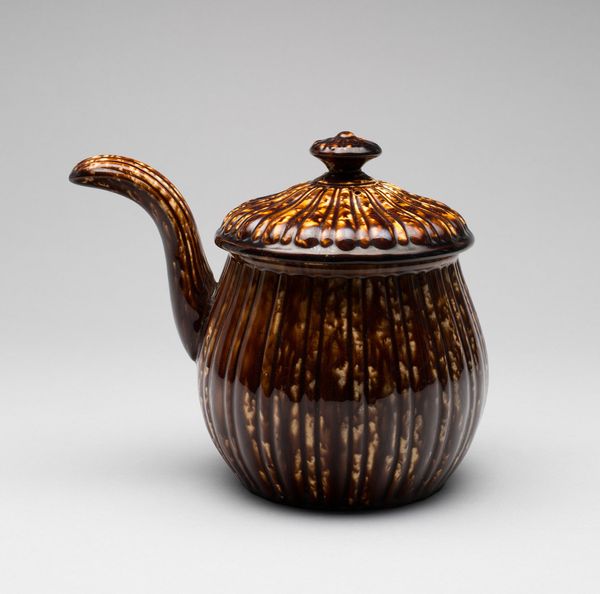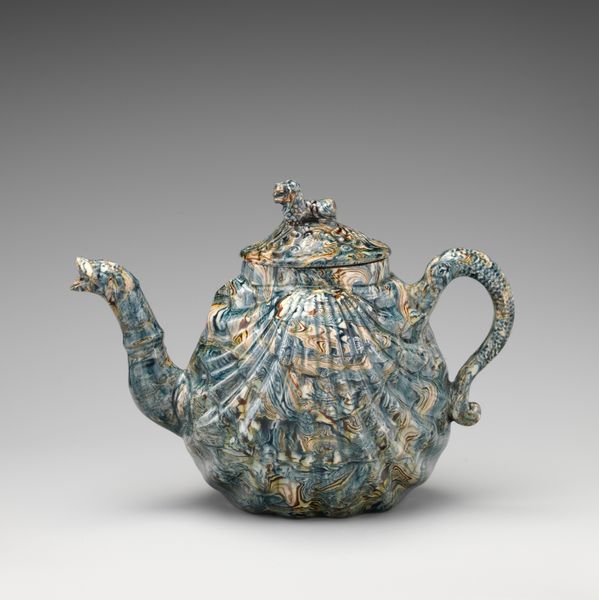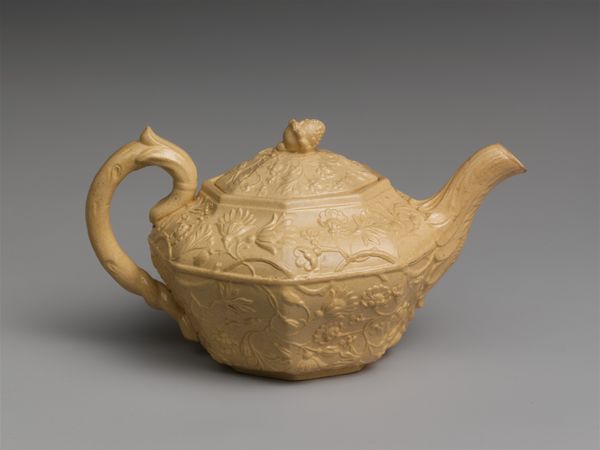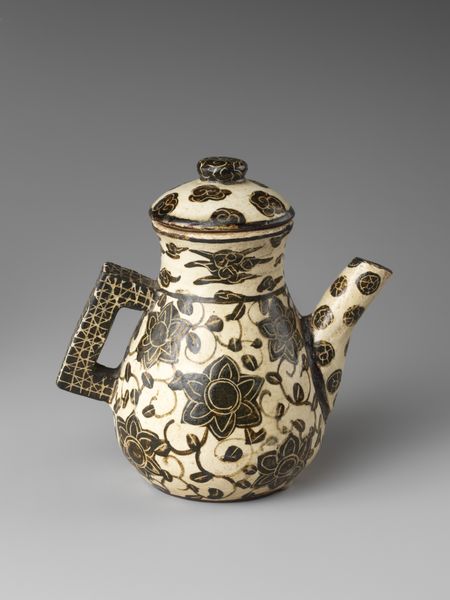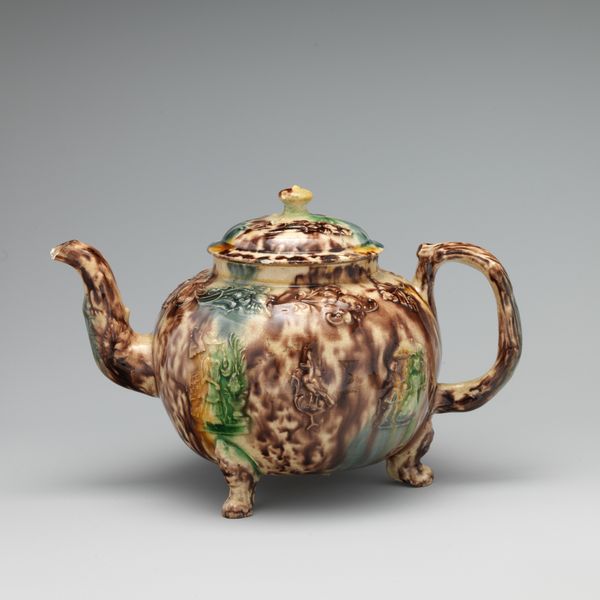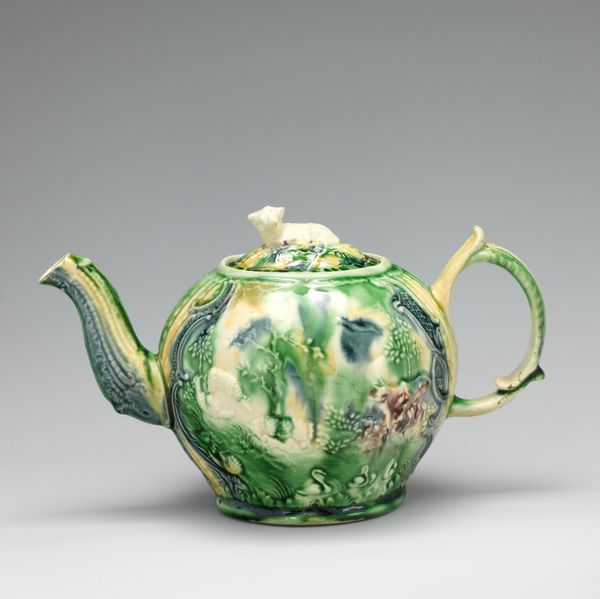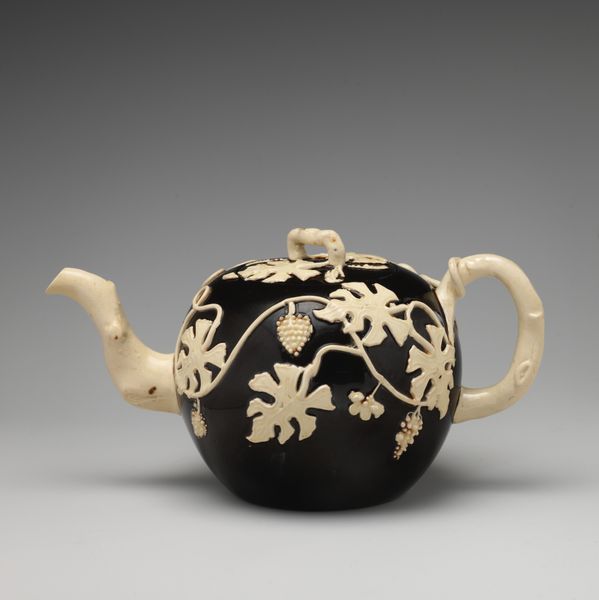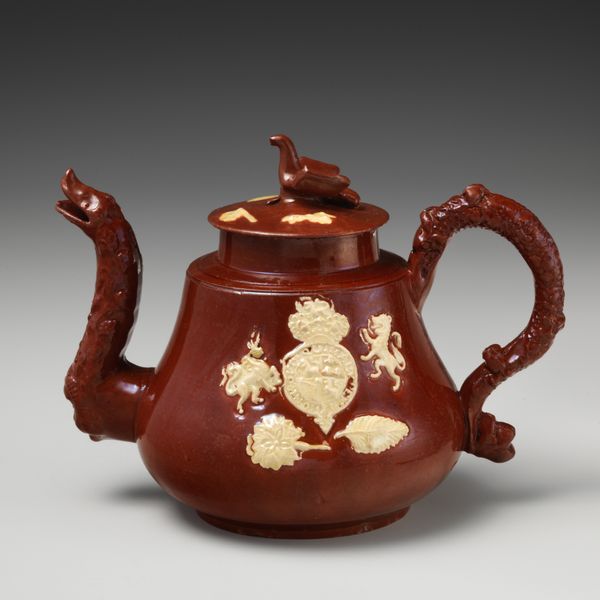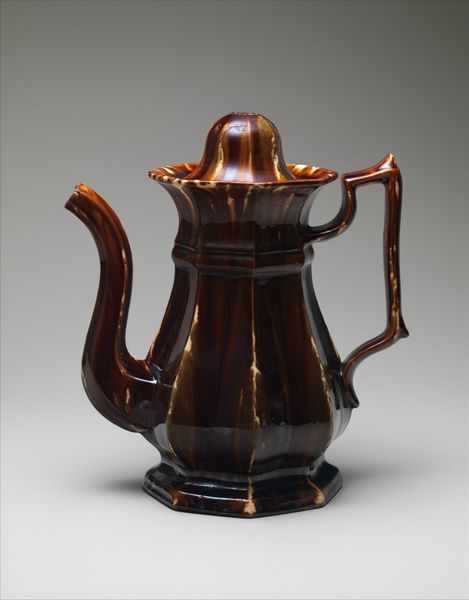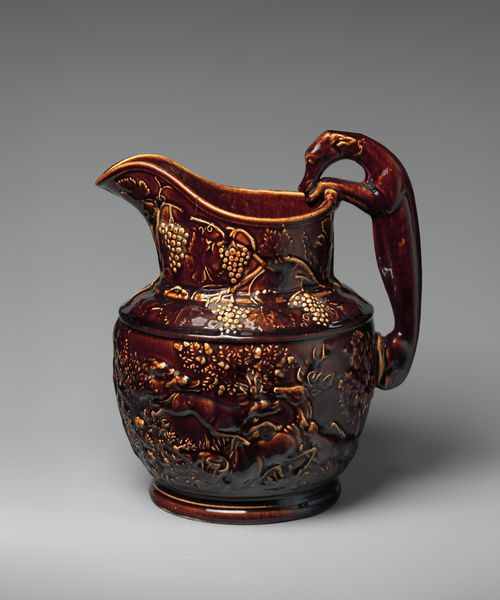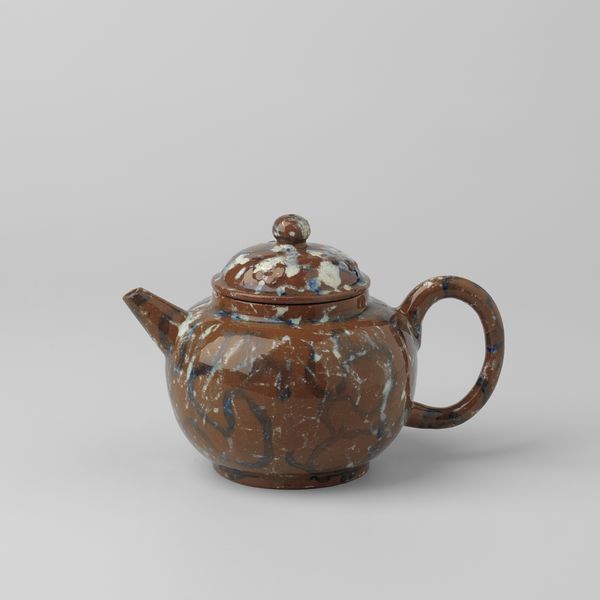
ceramic, earthenware
#
ceramic
#
earthenware
#
united-states
#
decorative-art
Dimensions: 8 3/4 in. (22.2 cm)
Copyright: Public Domain
Curator: This curious object is a "Covered Bean Pot," crafted by Lyman, Fenton & Co. around 1849. It’s currently held here at the Metropolitan Museum of Art, made from earthenware. Editor: Well, it certainly has character. The color scheme is intense, almost like a stormy landscape bottled up in a pot. What do you think of the shape? It’s surprisingly squat, yet oddly charming. Curator: I see a fascinating fusion of function and visual statement. The sponged decoration is quite distinctive, don't you think? This would not only add visual interest to the piece, but also tie into the domestic symbolism it carried. Editor: Ah, yes, domestic symbolism. How does this fit into its time period? Were bean pots status symbols, communal objects, or simply part of everyday life? Curator: I think there's a great interplay between aesthetics and utility during this era. Bean pots reflected emerging industrialized production while maintaining folksy charm, aligning to growing American middle class that increasingly looked towards new goods. The choice of earthenware suggests a groundedness and practicality. The "sponge-decorated" aesthetic evokes a homemade ethos that's actually coming from mass-produced items. Editor: Interesting point about production versus ethos. The streaks in the decorative technique almost feel primitive, hand-crafted despite its being mass-produced. What might viewers in the mid-19th century have seen in such patterns, as opposed to our own sensibilities? Curator: Perhaps an assertion of individuality amidst uniformity? Though manufactured, these irregular sponged patterns echo natural motifs, a comfort maybe from industrial change that also asserts uniqueness and handiwork. I would posit that viewers saw the potential of a newly industrial, modern era that's balanced with more "traditional" aesthetic markers. Editor: Yes, that potential is really felt in the form of a modest object with humble materials. I'm seeing a fascinating tension between utility, factory production, and artistic expression. It has an appealing visual paradox. Curator: I agree; It makes you think about art's complex role in people’s lives!
Comments
No comments
Be the first to comment and join the conversation on the ultimate creative platform.

